Treatment Services
Control and Eradication
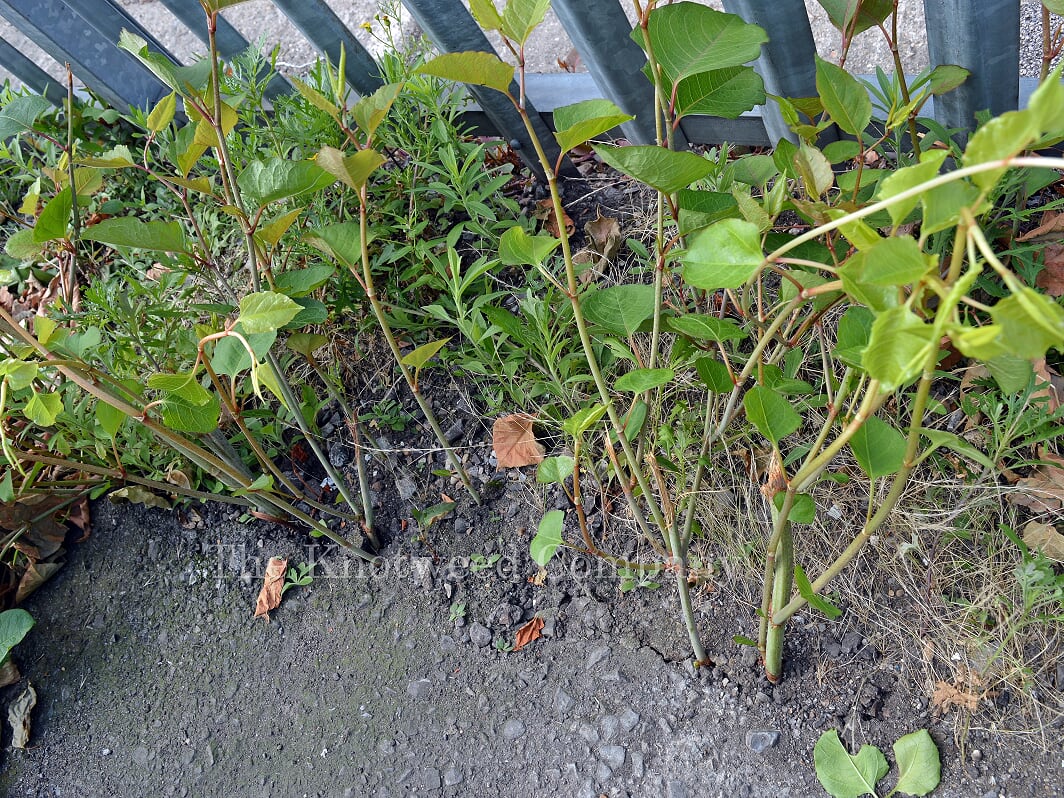
There are a number of methods available for remediating Japanese knotweed. Many companies refer to all of them as achieving eradication, which is inaccurate, since most are a means of achieving control. It is important to understand the distinction, as there may be long-term considerations involved where control methods have been used.
Under the dictionary definition, the term ‘eradication’ refers to a complete removal of the issue in question. In regard to Japanese knotweed, this would mean total excavation of the knotweed (see ‘Excavation’ below). However, for many residential and commercial properties in particular, a full removal and disposal to landfill would be prohibitively expensive. If the knotweed has crossed a property boundary or two, it would also be infeasible (unless the neighbour was prepared to have a section of their land dug up). In addition to this, the Environment Agency have previously expressed their concern about unnecessary waste being disposed of at landfill. Consequently, they regard such an operation to be a last resort which should only be considered if all other options have been ruled out. Our landfill resources in the UK are dwindling and there are an increasingly limited number of landfills that will take Japanese knotweed material. With knotweed (and soil containing knotweed) being classed as a controlled waste, it has very specific conditions under which it needs to be disposed of and only landfills with sufficient space will be able to comply with them.

Therefore, for many sites, especially residential properties, herbicide treatment programmes are considered to be the most suitable option. Herbicide treatment, when conducted correctly (see ‘Herbicide Treatment’ below), can be a very effective way of dealing with knotweed. However, it is a means of control - full eradication in the literal sense cannot be guaranteed. The aim of herbicide treatment is to gradually kill off the rhizome in the ground. At some point, the knotweed will no longer produce new growth. If the knotweed is monitored for a suitable period of time and no regrowth occurs, the treatment programme is deemed to be complete. In likelihood, there will still be viable rhizome present in the ground. However, since it will be attached to dead rhizome, it is unlikely it will ever gain the strength to produce new growth in the future. As such, it will remain dormant and eventually will die off.
However, knotweed can remain dormant but alive for many years and this is why it is important to understand the long-term considerations of herbicide control. Provided the knotweed remains undisturbed in the ground, it is unlikely any new growth will emerge. But if the knotweed is dug up and the viable rhizome is severed from the dead rhizome, this could stimulate the live rhizome to generate new growth.
Herbicide control is an effective method of dealing with Japanese knotweed and is certainly the most economic. If the area of land where the knotweed is situated is unlikely to be disturbed in the future (i.e. will not be built upon or dug out for landscaping purposes), herbicide programmes are eminently suitable and can produce the long-term results required. If significant disturbance to the knotweed area is scheduled to occur, other methods will need to be considered.
Herbicide Treatment
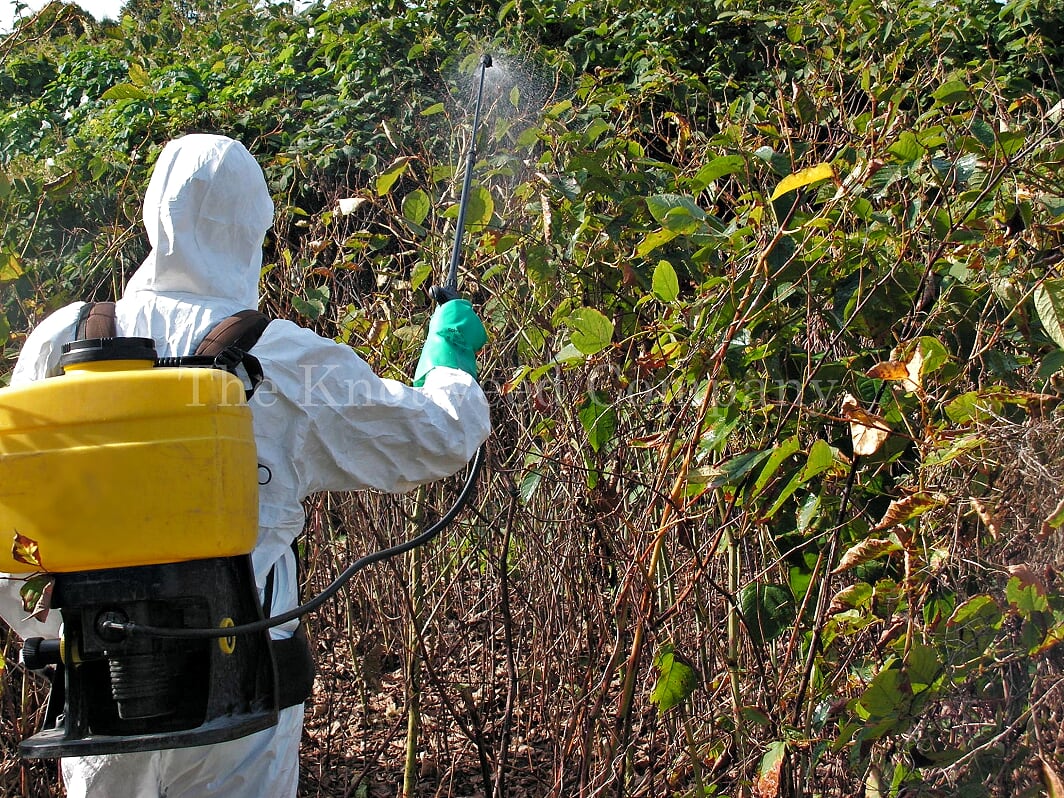
Herbicide programmes take several years to achieve completion, but are often the cheapest and most environmentally-friendly solution for most situations. Unless the knotweed is extremely immature and has not yet developed a rhizome system of any great significance, treatment will take a minimum of three years and will take longer if the knotweed is mature and well-established. Follow-up monitoring of at least two years after the final herbicide application will be required on all treatment programmes before a Certificate of Completion can be issued, in accordance with the PCA Code of Practice.
Safety with herbicides is paramount. A contractor may only use trained, competent and qualified staff to apply herbicides. The minimum qualification for operators is the NPTC PA1 and PA6a (both are required). The Knotweed Company uses only BASIS-qualified advisers able to select the most appropriate herbicide for use on our customers' sites and fully qualified, experienced staff to carry out the work.
In some circumstances, herbicide treatment can lead to the knotweed retreating into dormancy for a period of time, whereby it is not killed off but does not produce new growth for several years. Residual herbicides are more likely to induce dormancy than translocating herbicides (such as glyphosate), though over-dosing or applying a treatment too early in the season can also produce this unwanted result regardless of the product being used. Following commencement of a herbicide programme, knotweed is more likely to retreat into a dormant state when it has previously been subjected to over-vigorous attempts to control it by others. This is why it is important to leave the knotweed alone and call in professional help at the earliest opportunity.
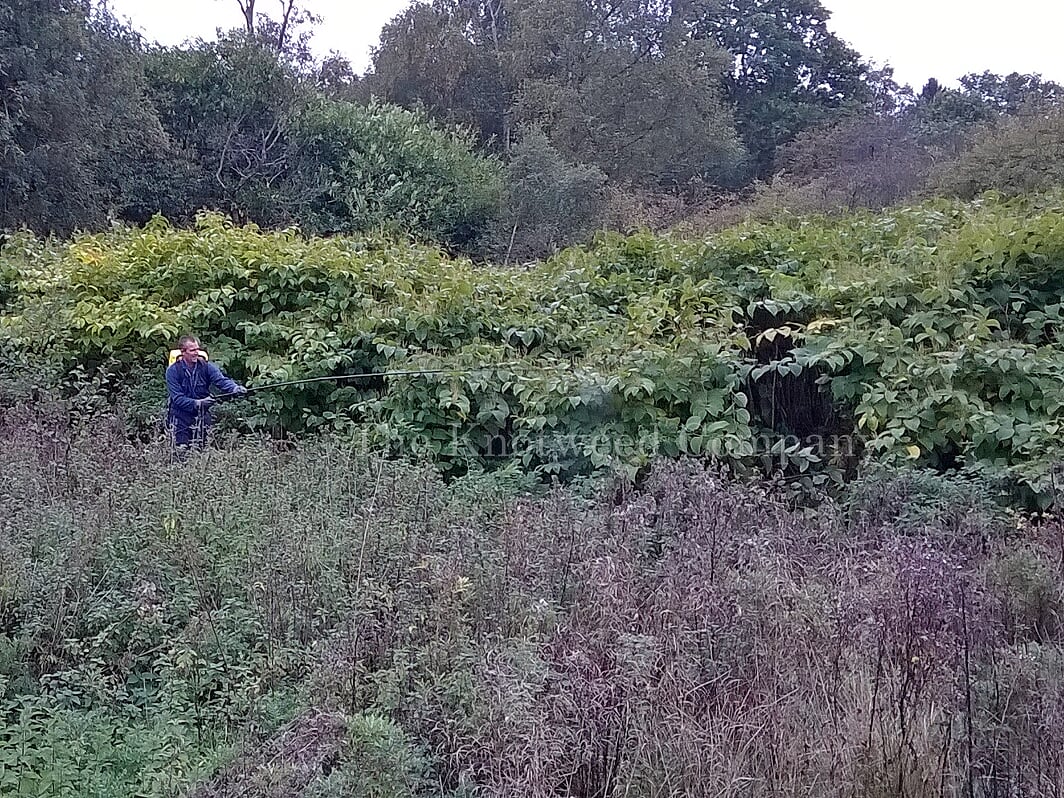
Herbicide programmes typically consist of one or two treatments per year. Anyone proposing a programme that involves treating the knotweed several times per year or claims their programme will take less than three years should be regarded with suspicion, as they will be more likely to induce dormancy than achieve a proper long-term result.
Herbicide treatment is an ideal solution for knotweed areas that will not be disturbed in the future by any building or landscaping works. It is worth noting that even knotweed that has been subject to a full treatment programme will still be classed as a controlled waste if excavated and, by law, will need to be disposed of accordingly.
Excavation
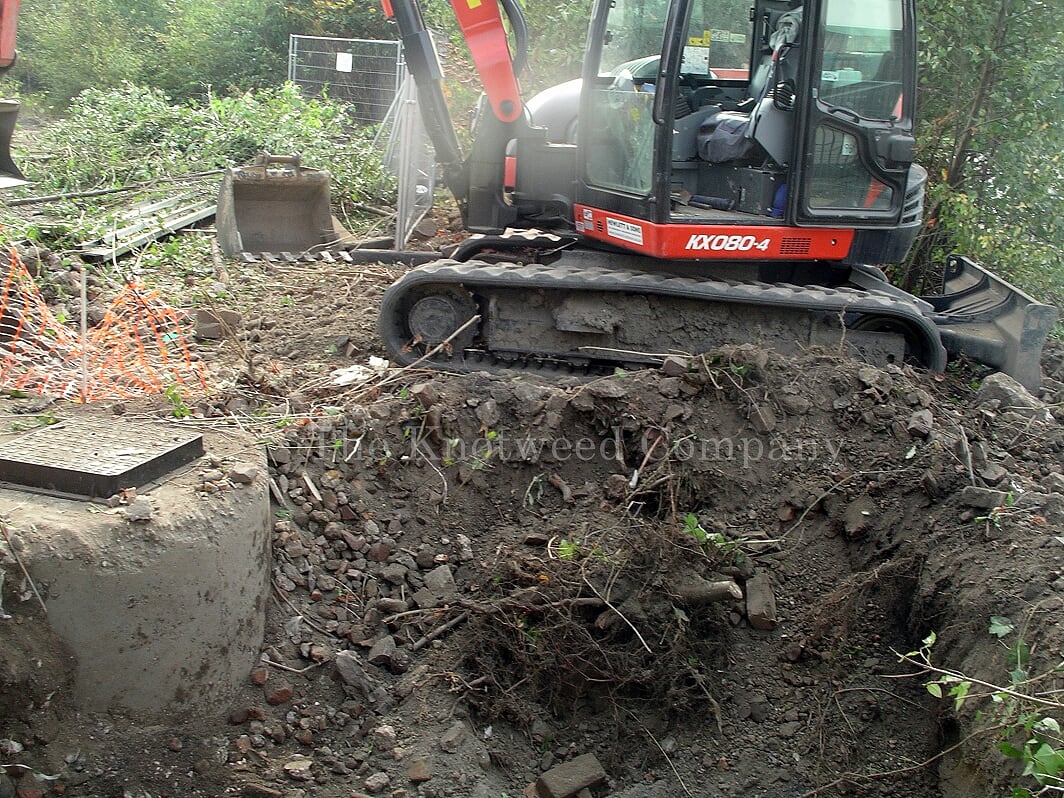
Total eradication of Japanese knotweed requires it to be removed from the ground to the fullest extent of the rhizome. Knotweed and soil containing knotweed material is classed as a controlled waste and, as such, consideration needs to be given to what to do with the knotweed once it has been excavated. It is the disposal, as well as plant machinery costs (knotweed rhizome in the ground can be extensive and will require mechanical excavators to remove), that means full excavation is the most expensive remediation option.
If disposed of off-site, knotweed material will need to be taken to a licensed landfill facility by prior arrangement and by a registered waste carrier. This operation is known colloquially as ‘dig and dump’. Although a more expensive option, costs may be controlled and readily justified when correctly managed. Dig and dump is commonly used on development sites, but can be used elsewhere in some specific circumstances. Because of the expense and the strain they put on the country’s landfill resources, dig and dump operations should be considered as a last resort once all other options have been contemplated and dismissed.
The two most common rationales for choosing dig and dump over other methodologies are time constraints and the likelihood of disturbance.
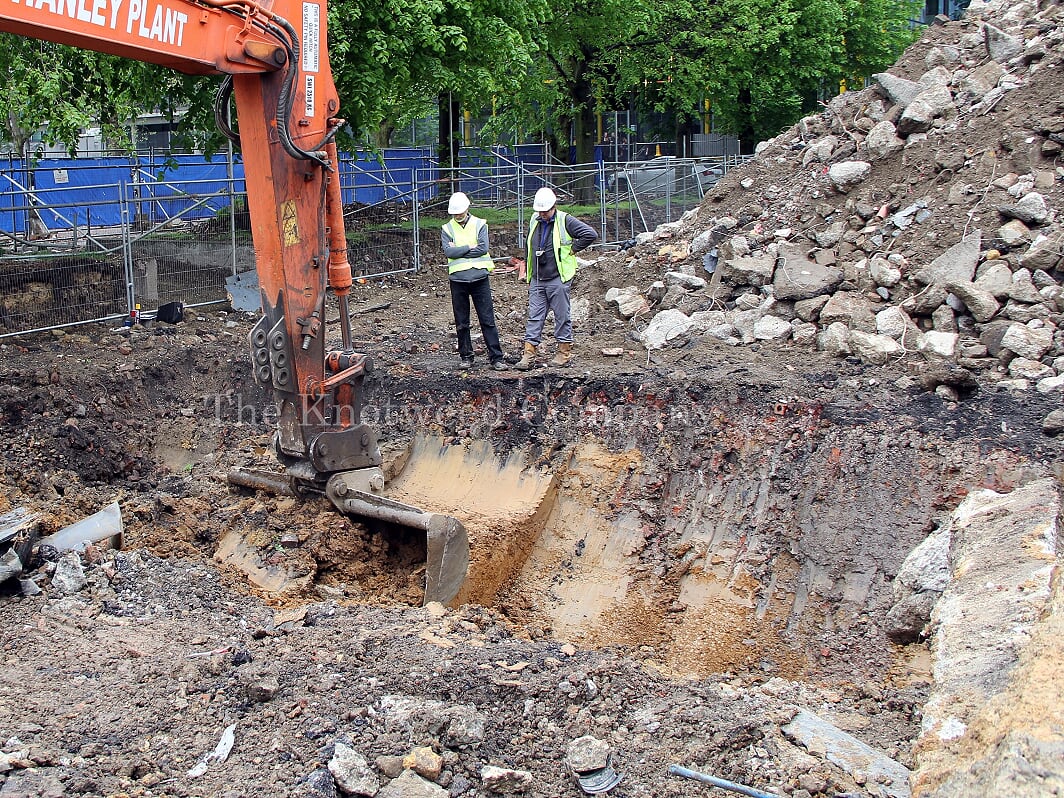
Excavation of the knotweed offers complete removal of the problem in a relatively short period of time, which is attractive on a site scheduled for development. Please note though that certain prerequisites are demanded by the landfill operators that will need to be satisfied before the excavation begins. These include an initial treatment with herbicide to reduce the vigour of the plant, soil analysis to ensure there are no contaminants on site that would affect the rate and manner of the tipping, and pre-booking the anticipated number of loads with the landfill site. Therefore, a few weeks lead time at least will need to be allowed for prior to the knotweed being removed.
If knotweed is to be left undisturbed in-situ, excavation may not be necessary and herbicide treatment could prove to be a valid option. However, if knotweed is to be built upon or will be part of any earthworks that will involve the movement of soils, excavation will be required. It is possible that a partial excavation and the use of root barriers could be suitable for the site (see ‘Combined and Alternative Methods’ below), which would help reduce the quantity of knotweed material and soil disposed of off-site at landfill.
Where there is sufficient space on a site, it may be possible to save landfill costs and resources by burying the excavated knotweed material on the site instead of removing it to landfill. The burial 'cell' will need to be fully or partly lined with root barriers (depending on the overall depth) and have a minimum of 2m of clean soil or other fill material on top. Permission to use this method may be required from the Environment Agency. As the material is dealt with on site, this method could qualify for tax concessions. 'Cells' are typically 4m deep and constructed with battered sides to ensure stability.
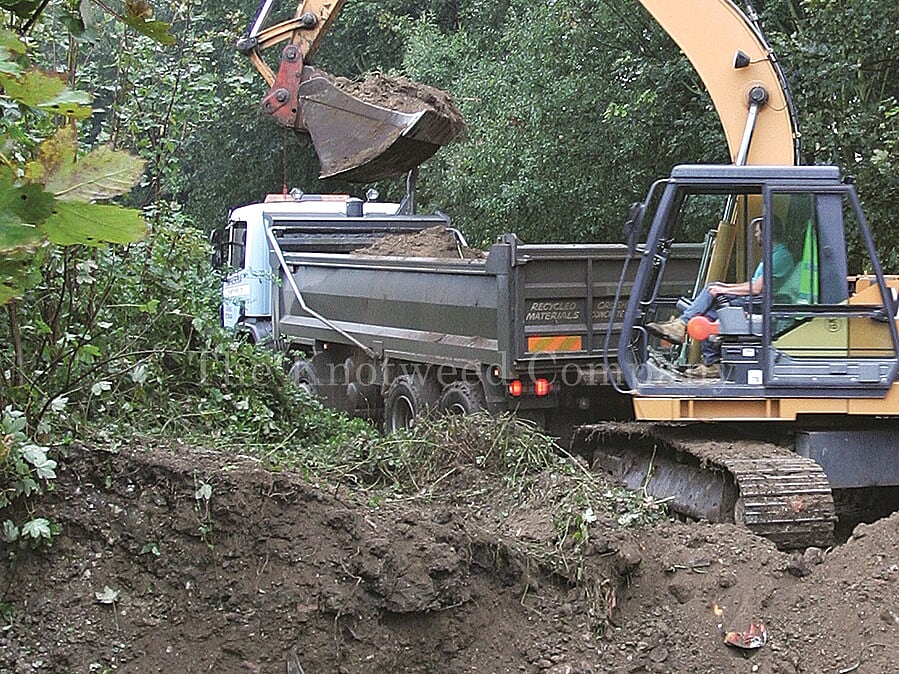
Buried knotweed is not dead, and this operation will still require at least one herbicide treatment a few weeks prior to excavation to reduce the vigour of the plant. The knotweed within the ‘cell’ will retreat into a dormant state and will remain so if not disturbed until such time as it eventually dies. This could take some time, as knotweed can remain dormant for at least 20 years. Therefore, where any site makes use of a burial ‘cell’, the location must be carefully recorded and the information passed onto any future owners of the site to ensure the ‘cell’ is not subsequently disturbed and the site reinfested with new knotweed regrowth as a result.
In a number of excavation cases, removal of the knotweed to the full extent of the rhizomes may not be possible, either because the rhizomes have spread beyond the boundaries of the client’s site or they have spread beneath structures that are not scheduled for demolition. In such circumstances, knotweed-resistant root barrier membranes will need to be installed along the boundary line to prevent future incursion of knotweed from the unexcavated material (see ‘Combined and Alternative Methods’ below). If building in close proximity to unexcavated knotweed material, ‘tanking’ (lining) the foundations of the new structure with knotweed-resistant root barrier is strongly recommended. Where neighbouring properties contain rhizome that are not removed as part of the excavation works, a herbicide treatment programme should be implemented on those properties as part of the works.
Combined and Alternative Methods
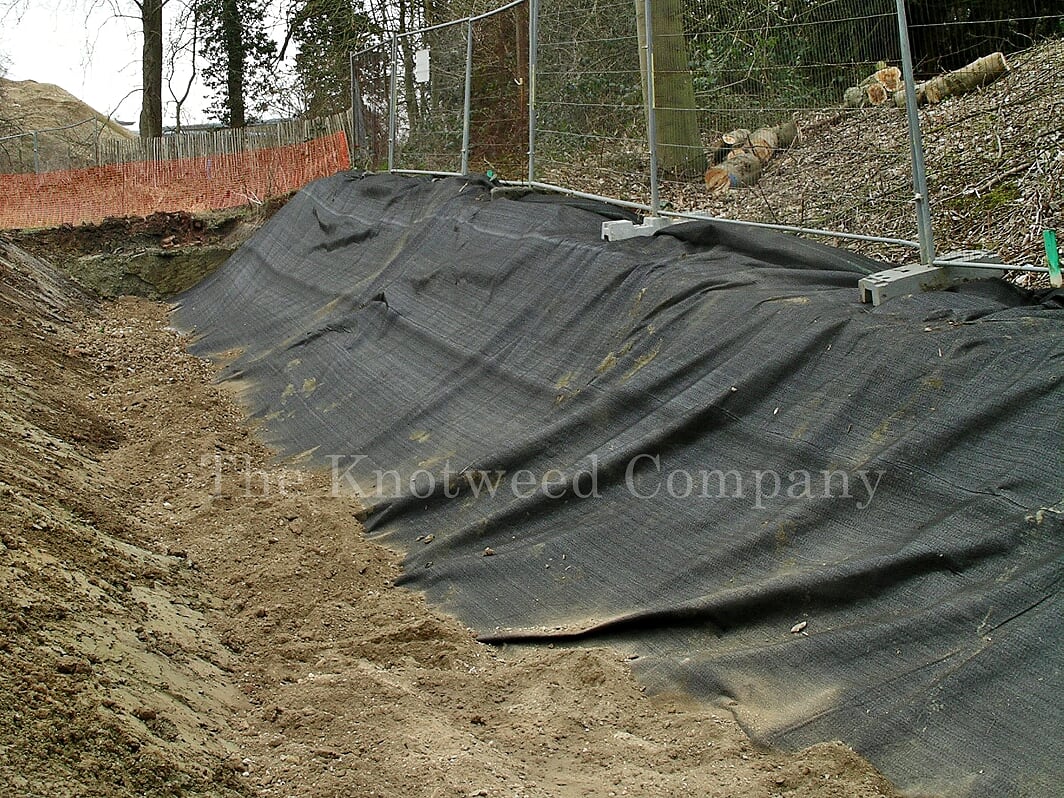
Full removal or an in-situ herbicide programme are not the only means of remediating Japanese knotweed. There are a number of other methodologies that include reduced digs, relocation, screening and the use of knotweed-resistant root barrier membranes, though all these methodologies will still involve some manner of excavation and/or herbicide control. Each has their own pros and cons and their suitability will be dependent on the specifics of the site.
It is possible to reduce the quantities of material to be removed from site following a full excavation by means of screening the material to separate the soil from the rhizome. In addition to reducing landfill costs, the screened soil can be re-used on site in landscaped areas, provided its use is carefully controlled and managed. However, this operation is not an exact science and will still result in small pieces of rhizome falling through the screen. Also, if the soil is clay or sodden, the screen will quickly become blocked and only the largest sections of rhizome will be possible to identify and separate. Therefore, this methodology is only suitable in ideal conditions and will always require monitoring of the area where the screened soil is re-used in case any immature knotweed emerges in the future. The monitoring should include herbicide treatment of any emergent growth.
In some circumstances, subject to byelaws and EA approval, screened knotweed material can be incinerated on site to prevent the need for disposal at landfill. However, knotweed can survive superficial burning and so the process would have to be properly undertaken to ensure all of the knotweed material is fully incinerated and no longer viable.
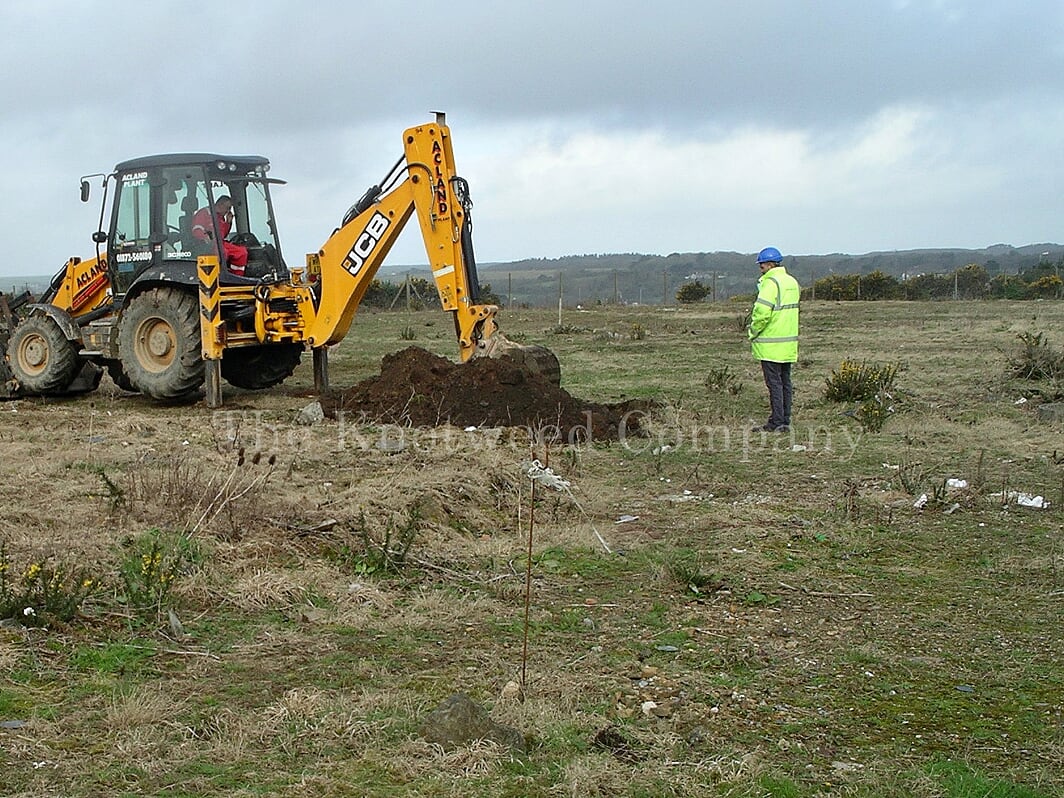
Another means of reducing quantities of material removed to landfill would be by using a reduced level excavation. Essentially, a layer of soil (which includes the highest concentration of Japanese knotweed material) is removed and taken to landfill. The depth of this layer may vary, but could typically be 300-500mm. Following this removal, a root barrier membrane is placed over the excavated surface and up to the exposed sides of the dig. Excavations adjacent to a building or structure may demand either the root barrier to be heat welded to its surface or left in contact. Backfill of excavated areas must only be carried out with knotweed-free soil, aggregate or rubble. Reduced level excavation can be used on large or small areas and is perhaps one of the most underused methods; simple, adaptable, reliable and suitable in many situations. For this methodology to be effective, it is vital the root barrier is not damaged by any subsequent works. Some knotweed rhizomes will remain at depth, but they are likely to retreat into a dormant state beneath the membrane and will eventually die. For peace of mind, the area should be monitored for a number of years to ensure no growth emerges around the edges of the membrane. Any such growth should be treated with herbicide. Alternatively, a root barrier can be used to completely encapsulate the remaining knotweed rhizomes, with the membranes being installed into deeper trenches around the perimeter.

If the site has sufficient space to accommodate it, the knotweed could be excavated and relocated to form a bund. The soil containing the knotweed would be spread out into a thin layer (no more than 500mm depth) and treated under a herbicide programme. This can be a quick and cost-effective solution for many development sites, whereby the knotweed issue is moved away from the development area so that construction works can begin. The bund would need to remain undisturbed throughout the treatment programme, which will take several years (other than if the bund is turned over as part of the programme of treatment works). On completion, the bund could be landscaped or the soil re-used elsewhere on site – as long as the area where the soil is used is monitored for several years to ensure no new knotweed growth emerges. By retaining all of the knotweed material on site, this methodology could qualify for tax concessions.
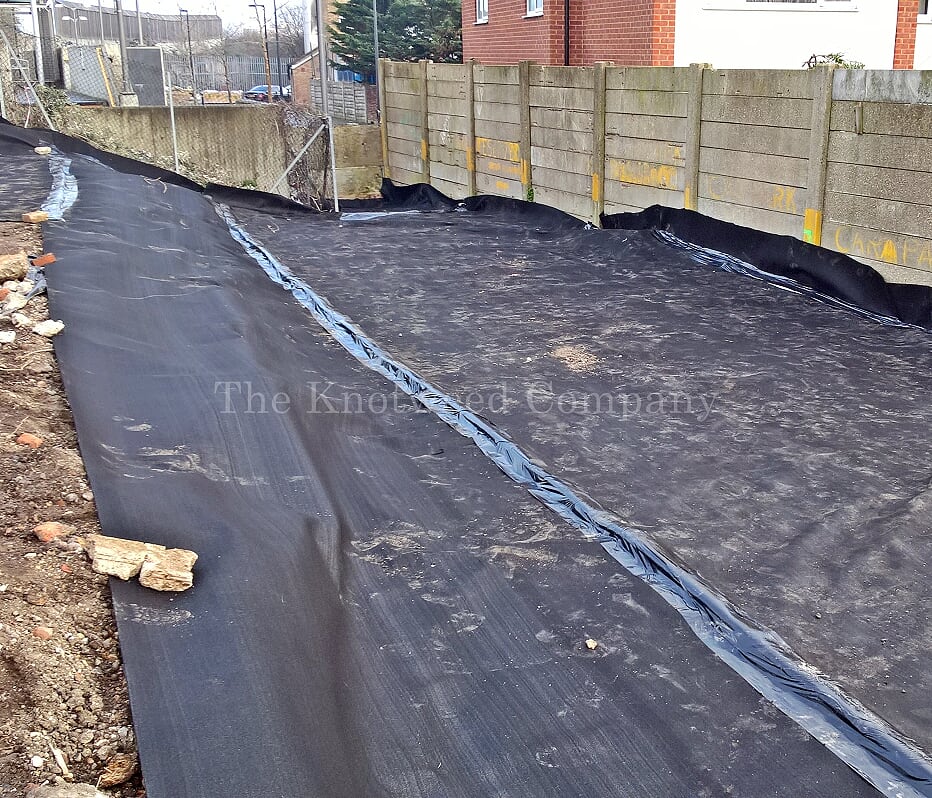
Knotweed-resistant root barrier membranes can be utilised in a number of ways. As outlined in ‘Excavation’ above, they are a crucial component in the creation of burial ‘cells’. Vertical root barriers are used to minimise the risk of an infestation from an adjoining property spreading across the boundary. When used in such a manner, they may need to be installed to a depth of up to 2m or even deeper (depending on the circumstances of the site). Barriers can be laid horizontally in reduced dig scenarios (as above) or to form a layer of protection beneath hard surfaces. Other uses of root barriers involve the protection of buildings or structures if knotweed is in the vicinity by ‘tanking’ (lining) the foundations. Root barrier membranes may not be suitable for all locations and will always need to be used in conjunction with other methodologies. In most cases, the use of membranes will necessitate the implementation of monitoring and a herbicide treatment programme.
Please read our cookies and privacy policy here
Copyright © 2018 · All Rights Reserved ·